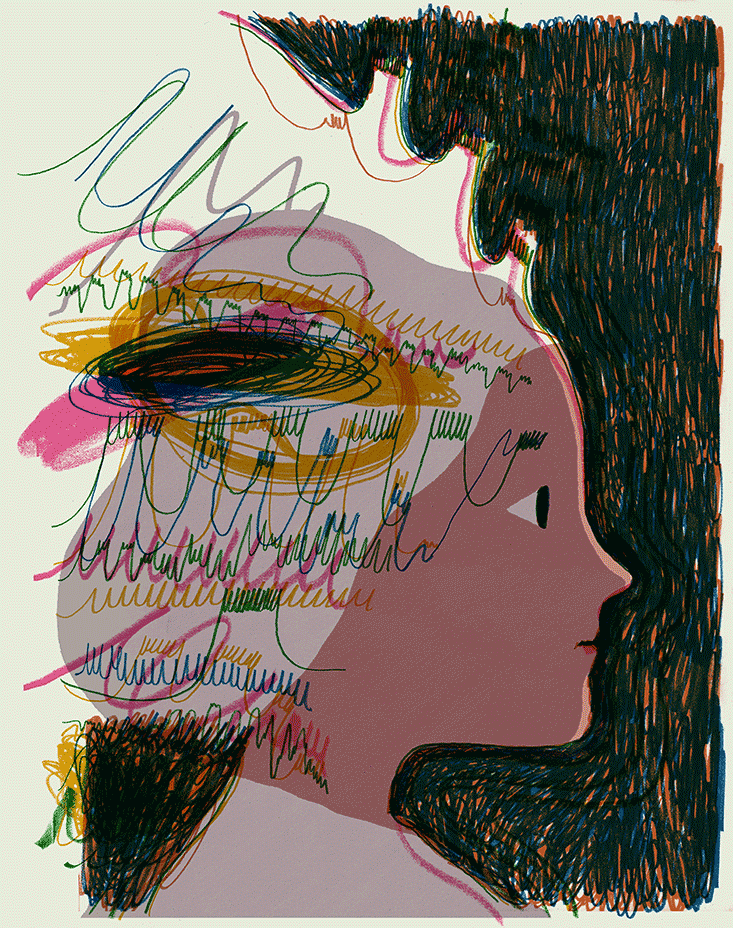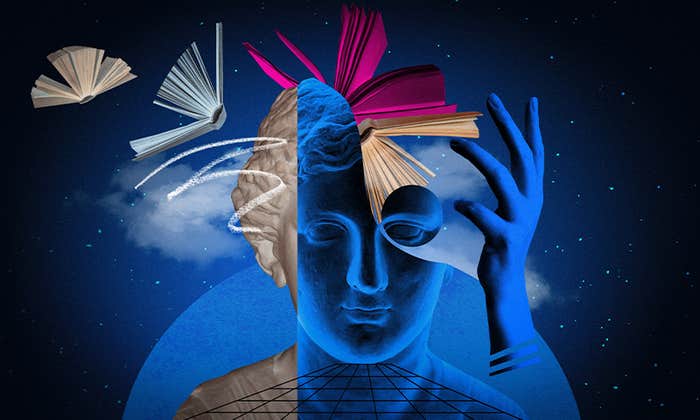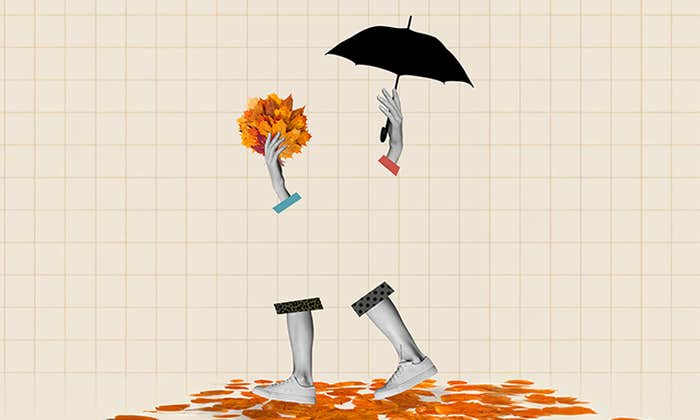In one important way, the recipient of a heart transplant ignores its new organ: Its nervous system usually doesn’t rewire to communicate with it. The 40,000 neurons controlling a heart operate so perfectly, and are so self-contained, that a heart can be cut out of one body, placed into another, and continue to function perfectly, even in the absence of external control, for a decade or more. This seems necessary: The parts of our nervous system managing our most essential functions behave like a Swiss watch, precisely timed and impervious to perturbations. Chaotic behavior has been throttled out.
Or has it? Two simple pendulums that swing with perfect regularity can, when yoked together, move in a chaotic trajectory. Given that the billions of neurons in our brain are each like a pendulum, oscillating back and forth between resting and firing, and connected to 10,000 other neurons, isn’t chaos in our nervous system unavoidable?
The prospect is terrifying to imagine. Chaos is extremely sensitive to initial conditions—just think of the butterfly effect. What if the wrong perturbation plunged us into irrevocable madness? Among many scientists, too, there is a great deal of resistance to the idea that chaos is at work in biological systems. Many intentionally preclude it from their models. It subverts computationalism, which is the idea that the brain is nothing more than a complicated, but fundamentally rule-based, computer. Chaos seems unqualified as a mechanism of biological information processing, as it allows noise to propagate without bounds, corrupting information transmission and storage.
The brain’s main function is to protect us, like an umbrella, from chaos.
At the same time, chaos has its advantages. On a behavioral level, the arms race between predator and prey has wired erratic strategies into our nervous system.1 A moth sensing an echolocating bat, for example, immediately directs itself away from the ultrasound source. The neurons controlling its flight fire in an increasingly erratic manner as the bat draws closer, until the moth, darting in fits, appears to be nothing but a tumble of wings and legs. More generally, chaos could grant our brains a great deal of computational power, by exploring many possibilities at great speed.
Motivated by these and other potential advantages, and with an accumulation of evidence in hand, neuroscientists are gradually accepting the potential importance of chaos in the brain.
Chaos is not the same as disorder. While disordered systems cannot be predicted, chaos is actually deterministic: The present state of the system determines its future. Yet even so, its behavior is only predictable on short time scales: Tiny differences in inputs result in vastly different outcomes. Chaotic systems can also exhibit stable patterns called “attractors” that emerge to the patient observer. Over time, chaotic trajectories will gravitate toward them. Because chaos can be controlled, it strikes a fine balance between reliability and exploration. Yet because it’s unpredictable, it’s a strong candidate for the dynamical substrate of free will.
The similarity to random disorder (or stochasticity) has been a thorn in the side of formal studies of chaos. It can be mathematically tricky to distinguish between the two—especially in biological systems. There are no definite tests for chaos when dealing with multi-dimensional, fluctuating biological data. Walter Freeman and his colleagues spearheaded some of the earliest studies attempting to prove the existence of chaos in the brain, but came to extreme conclusions on limited data. He’s argued, for example, that neuropil, the extracellular mix of axons and dendrites, is the organ of consciousness—a strong assertion in any light. Philosophers soon latched onto these ideas, taking even the earliest studies at face value. Articles by philosophers and scientists alike can be as apt to quote Jiddu Krishnamurti as Henri Poincaré, and chaos is often handled with a semi-mystical reverence.2, 3
As a result, researchers must tread carefully to be taken seriously. But the search for chaos is not purely poetic. The strongest current evidence comes from single cells. The squid giant axon, for example, operates in a resting mode or a repetitive firing mode, depending on the external sodium concentration. Between these extremes, it exhibits unpredictable bursting that resembles the wandering behavior of a chaotic trajectory before it settles into an attractor. When a periodic input is applied, the squid giant axon responds with a mixture of both oscillating and chaotic activity.4 There is chaos in networks of cells, too. The neurons in a patch of rat skin can distinguish between chaotic and disordered patterns of skin stretching.5

More evidence for chaos in the nervous system can be found at the level of global brain activity. Bizarrely, an apt metaphor for this behavior is an iron slab.6 The electrons it contains can each point in different directions (more precisely, their spins can point). Like tiny magnets, neighboring spins influence each other. When the slab is cold, there is not enough energy to overcome the influence of neighboring spins, and all spins align in the same direction, forming one solid magnet. When the slab is hot, each spin has so much energy that it can shrug off the influence of its neighbor, and the slab’s spins are disordered. When the slab is halfway between hot and cold, it is in the so-called “critical regime.” This is characterized by fluctuating domains of same-spin regions which exhibit the highest possible dynamic correlations—that is, the best balance between a spin’s ability to influence its neighbors, and its ability to be changed.
The critical state can be quite useful for the brain, allowing it to exploit both order and disorder in its computations—employing a redundant network with rich, rapid chaotic dynamics, and an orderly readout function to stably map the network state to outputs. The critical state would be maintained not by temperature, but the balance of neural excitation and inhibition. If the balance is tipped in favor of more inhibition, the brain is “frozen” and nothing happens. If there is too much excitation, it will descend into chaos. The critical point is analogous to an attractor.
But how can we tell whether the brain operates at the critical point? One clue is the structure of the signals generated by the activity of its billions of neurons. We can measure the power of the brain’s electrical activity at different oscillation frequencies. It turns out that the power of activity falls off as the inverse of the frequency of that activity. Once referred to as 1/f “noise,” this relationship is actually a hallmark of systems balanced at their critical point.7 The spatial extent of regions of coordinated neuronal activity also depend inversely on frequency, another hallmark of criticality. When the brain is pushed away from its usual operating regime using pharmacological agents, it usually loses both these hallmarks,8, 9 and the efficiency of its information encoding and transmission is reduced.10
The philosopher Gilles Deleuze and psychiatrist Felix Guattari contended that the brain’s main function is to protect us, like an umbrella, from chaos. It seems to have done so by exploiting chaos itself. At the same time, neural networks are also capable of near-perfect reliability, as with the beating heart. Order and disorder enjoy a symbiotic relationship, and a neuron’s firing may wander chaotically until a memory or perception propels it into an attractor. Sensory input would then serve to “stabilize” chaos. Indeed, the presentation of a stimulus reduces variability in neuronal firing across a surprising number of different species and systems,11 as if a high-dimensional chaotic trajectory fell into an attractor. By “taming” chaos, attractors may represent a strategy for maintaining reliability in a sensitive system.12 Recent theoretical and experimental studies of large networks of independent oscillators have also shown that order and chaos can co-exist in surprising harmony, in so-called chimera states.13
The current research paradigm in neuroscience, which considers neurons in a snapshot of time as stationary computational units, and not as members of a shifting dynamical entity, might be missing the mark entirely. If chaos plays an important role in the brain, then neural computations do not operate as a static read-out, a lockstep march from the transduction of photons to the experience of light, but a high-dimensional dynamic trajectory as spikes dance across the brain in self-choreographed cadence.
While hundreds of millions of dollars are being funneled into building the connectome—a neuron-by-neuron map of the brain—scientists like Eve Marder have argued that, due to the complexity of these circuits, a structural map alone will not get us very far. Functional connections can flicker in and out of existence in milliseconds. Individual neurons appear to change their tuning properties over time14, 15 and thus may not be “byte-addressable”—that is, stably represent some piece of information—but instead operate within a dynamic dictionary that constantly shifts to make room for new meaning. Chaos encourages us to think of certain disorders as dynamical diseases, epileptic seizures being the most dramatic example of the potential failure of chaos.16 Chaos might also serve as a signature of brain health: For example, researchers reported less chaotic dynamics in the dopamine-producing cells of rodents with brain lesions, as opposed to healthy rodents, which could have implications in diagnosing and treating Parkinson’s and other dopamine-related disorders.17
Economist Murray Rothbard described chaos theory as “destroying math from within.” It usurps the human impulse to simplify, replacing the clear linear relationships we seek in nature with the messy and unpredictable. Similarly, chaos in the brain undermines glib caricatures of human behavior. Economists often model humans as “rational agents”: hedonistic calculators who act for their future good. But we can’t really act out of self-interest—though that would be a reasonable thing to do—because we are terrible at predicting what that is. After all, how could we? It’s precisely this failure that makes us what we are.
Kelly Clancy studied physics at MIT, then worked as an itinerant astronomer for several years before serving with the Peace Corps in Turkmenistan. As a National Science Foundation fellow, she recently finished her PhD in biophysics at the University of California, Berkeley. She will begin her postdoctoral research at Biozentrum in Switzerland this fall.
References
1. Humphries, D.A. & Driver, P.M. Protean defence by prey animals. Oecologia 5, 285–302 (1970).
2. Abraham, F.D. Chaos, bifurcations, and self-organization: dynamical extensions of neurological positivism. Psychoscience 1, 85-118 (1992).
3. O’Nuallain, S. Zero power and selflessness: what meditation and conscious perception have in common. Cognitive Science 4, 49-64 (2008).
4. Korn, H. & Faure, P. Is there chaos in the brain? II. Experimental evidence and related models. Comptes Rendus Biologies 326, 787–840 (2003).
5. Richardson, K.A., Imhoff, T.T., Grigg, P. & Collins, J.J. Encoding chaos in neural spike trains. Physical Review Letters 80, 2485–2488 (1998).
6. Beggs, J.M. & Timme, N. Being critical of criticality in the brain. Frontiers in Physiology 3, 1–14 (2012).
7. Bak, P., Tang, C. & Wiesenfeld, K. Self-organized criticality: an explanation of 1/f noise. Physical Review Letters 59, 381–384 (1987).
8. Mazzoni, A. et al. On the dynamics of the spontaneous activity in neuronal networks. PLoS ONE 2 e439 (2007).
9. Beggs, J.M. & Plenz, D. Neuronal avalanches in neocortical circuits. Journal of Neuroscience 23, 11167–11177 (2003).
10. Shew, W.L., Yang, H., Yu, S., Roy, R. & Plenz, D. Information capacity and transmission are maximized in balanced cortical networks with neuronal avalanches. Journal of Neuroscience 31, 55–63 (2011).
11. Churchland, M.M. et al. Stimulus onset quenches neural variability: a widespread cortical phenomenon. Nature Neuroscience 13, 369–378 (2010).
12. Laje, R. & Buonomano, D.V. Robust timing and motor patterns by taming chaos in recurrent neural networks. Nature Neuroscience 16, 925–933 (2013).
13. Kuramoto, Y. & Battogtokh, D. Coexistence of coherence and incoherence in nonlocally coupled phase oscillators: a soluble case. Nonlinearity 26, 2469-2498 (2002).
14. Margolis, D.J. et al. Reorganization of cortical population activity imaged throughout long-term sensory deprivation. Nature Neuroscience 15, 1539–1546 (2012).
15. Ziv, Y. et al. Long-term dynamics of CA1 hippocampal place codes. Nature Neuroscience 16, 264–266 (2013).
16. Schiff, S.J. et al. Controlling chaos in the brain. Nature 370, 615–620 (1994).
17. di Mascio, M., di Giovanni, G., di Matteo, V. & Esposito, E. Decreased chaos of midbrain dopaminergic neurons after serotonin denervation. Neuroscience 92, 237–243 (1999).

























